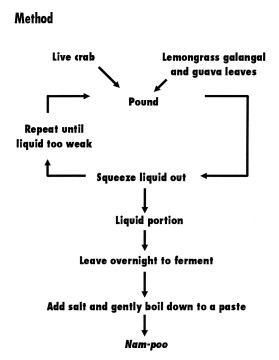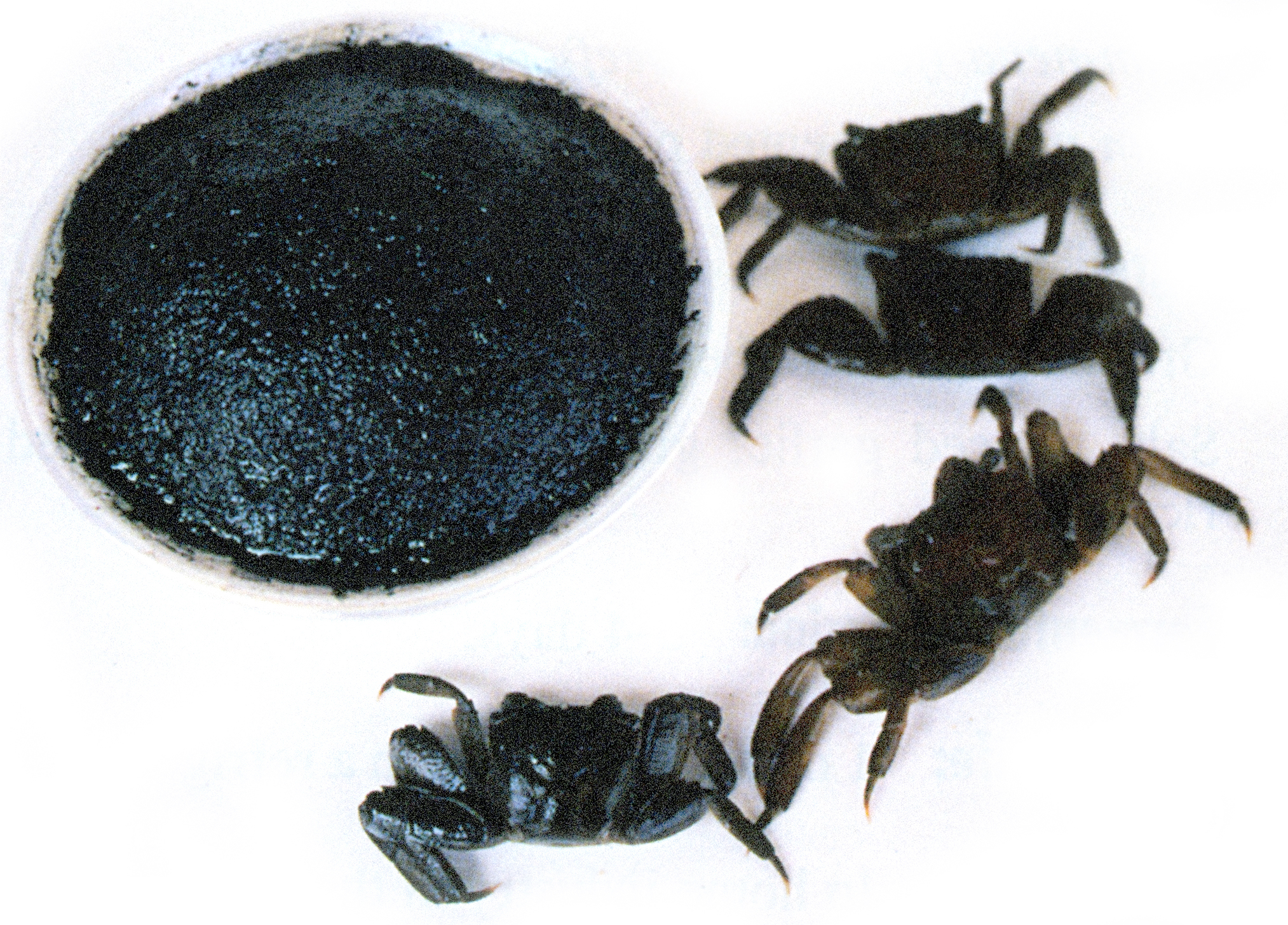Skip to main content
- Name (Thai)
-
น้ำปู
- Name (English)
-
Fermented freshwater crab paste
- Local name
-
Nam-poo
- Product
-
Fishery
- Ingredients
-
Fresh water crab: Sesarma mederi (Poo-sa-mer) Somanniathelpusa sp. (Poo-naa) Lemongrass leaves, Galangal leaves, Guava leaves, salt, water
- Fermentation
-
1 day.
- Storage life
-
1 year.
- Microorganisms
-
- Properties
-
Thick black paste with a salty taste and very strong characteristic aroma.
- Method
-
1. Wash the live crabs and put them in a mortar (called a Krok Momg by Northern Thais). Add leaves of lemongrass, galangal and guava. In some districts only lemongrass is added. This is used to mask the fishy smell of the crab. Pound the mixed ingredients until finely ground, adding a little water.
2. Press the liquid obtained through a sieve. This is normally done by hand through a woven bamboo is the first extract.
3. Return the solid fraction to the mortar. Add a little water and repeat the pounding and extracting of liquid to get second and third liquid portions or until the colour shows the liquid is too diluted.
4. Mix together all liquid portions and leave to ferment overnight.
5. The next morning, add a small amount of salt (at this stage the liquid is greenish yellow) and gently cook at low temperature until it turns into a dark paste. This final product is then packed in a glass jar with a screw cap.
- Production
-
At home level, in the North only.
- Consumption
-
Nam-poo is an ingredient in Nam-prik, a condiment used for dipping boiled vegetables such as bamboo shoot, eggplants, string beans etc.





